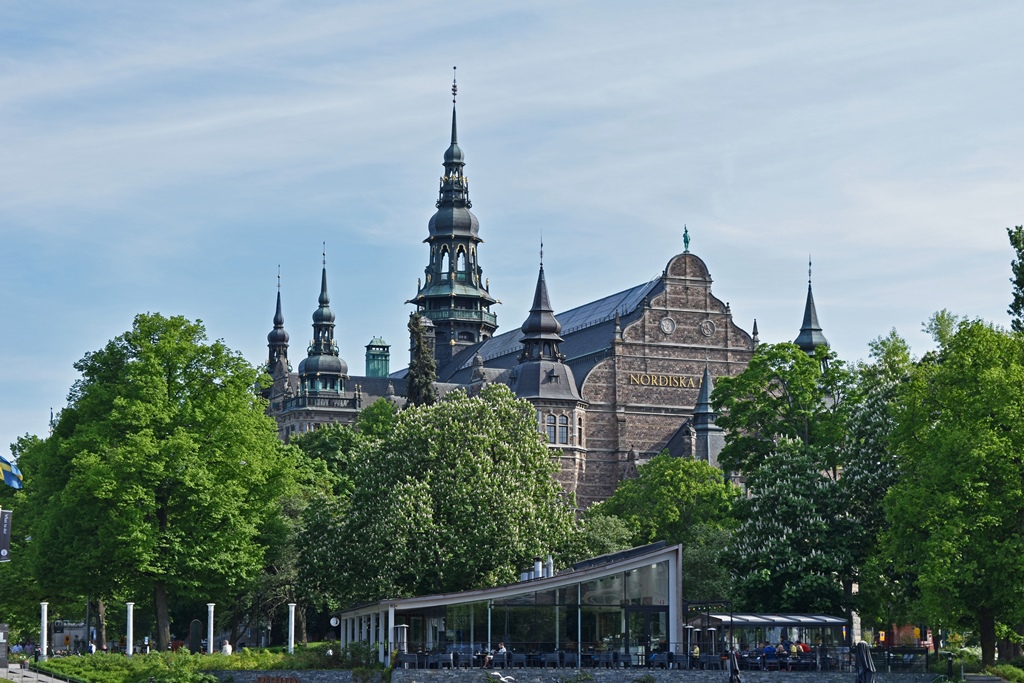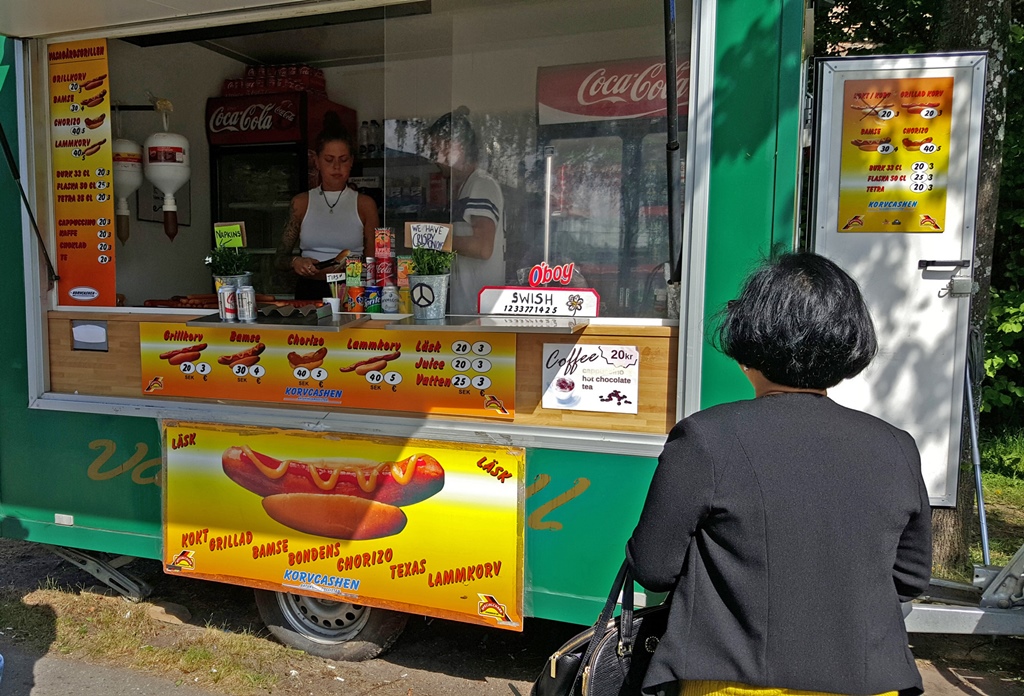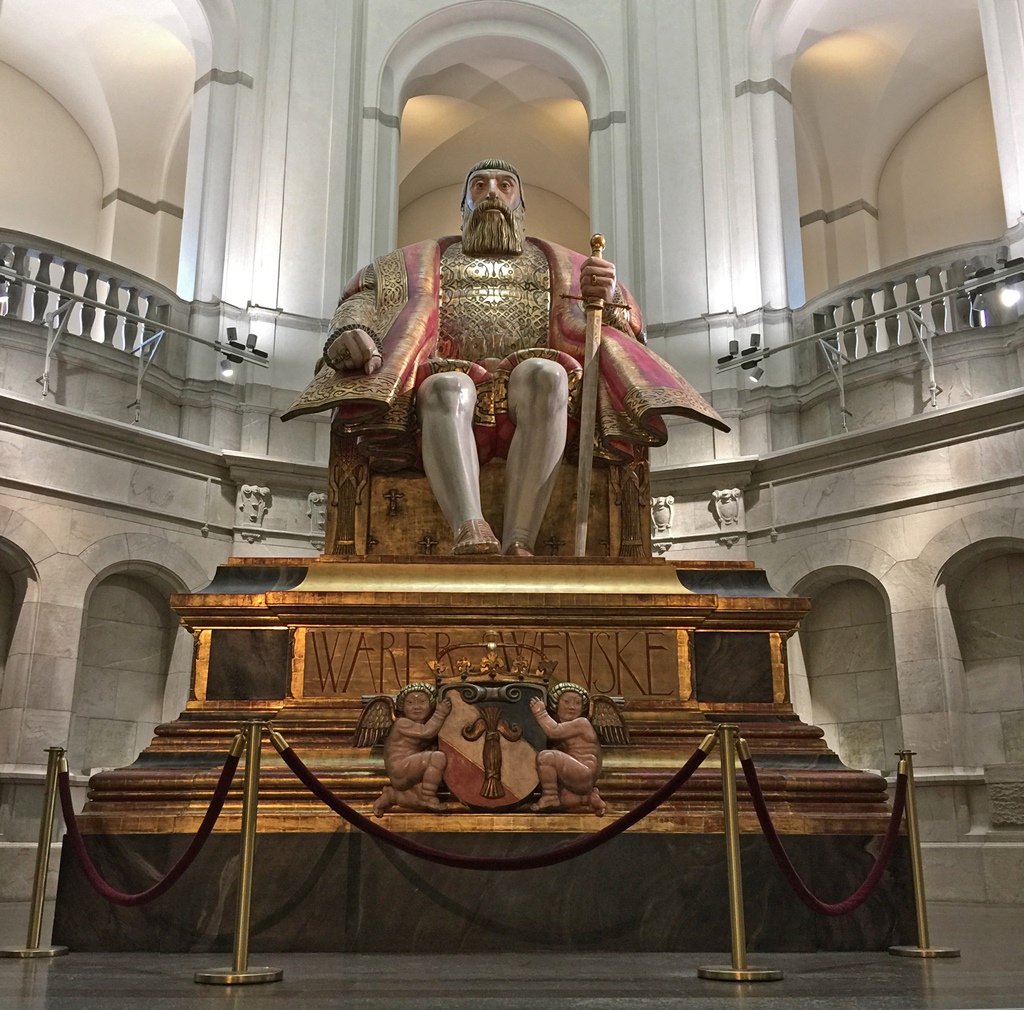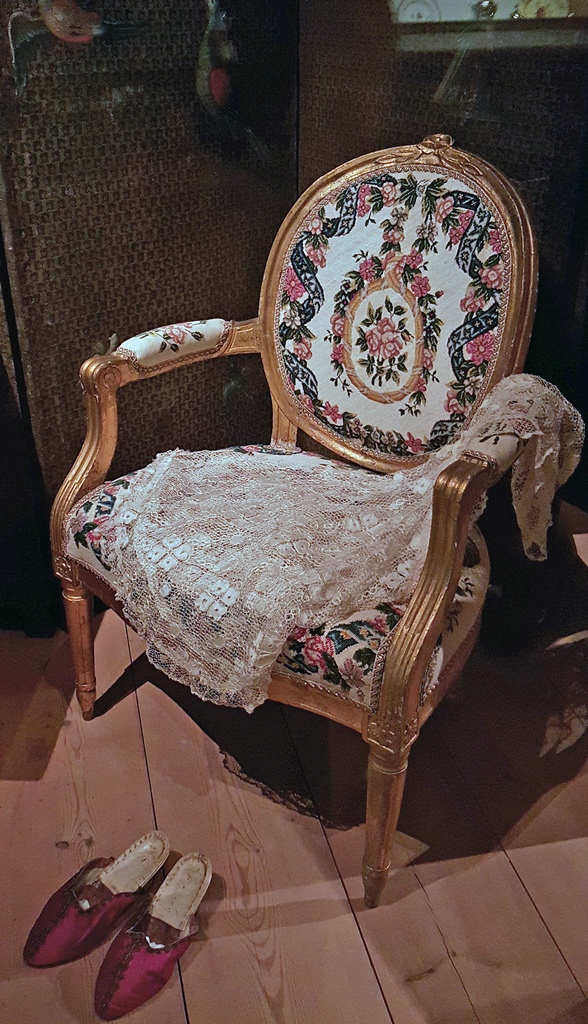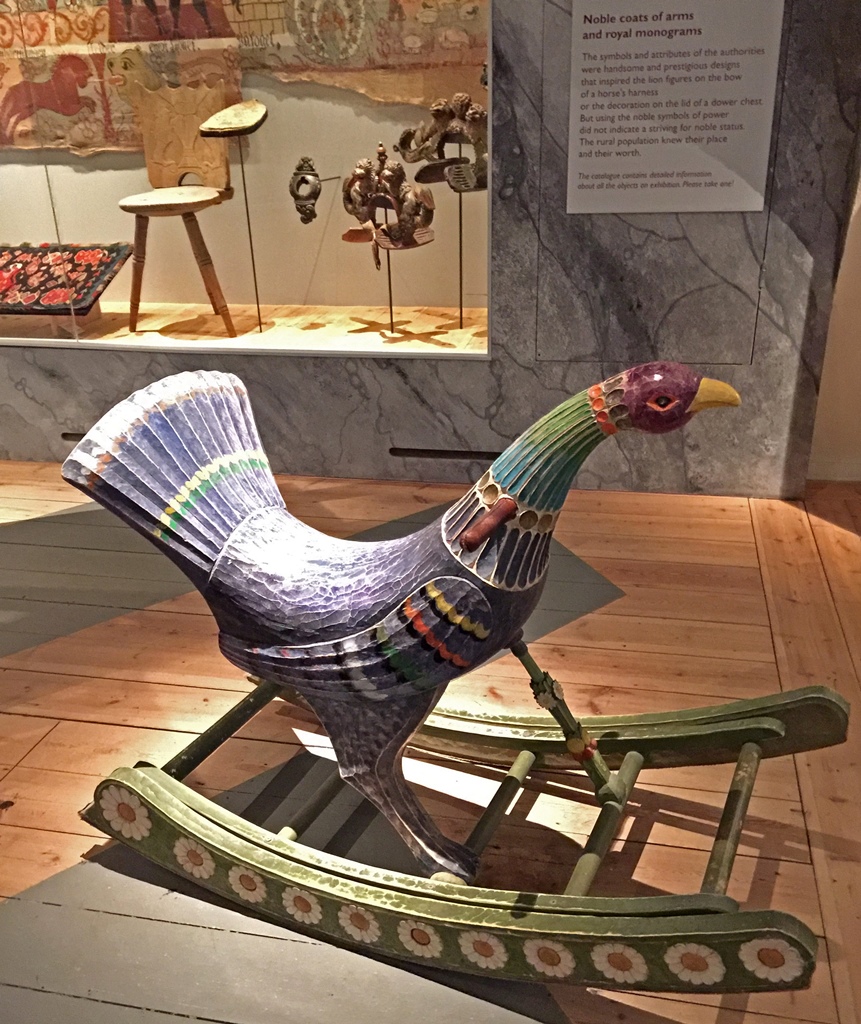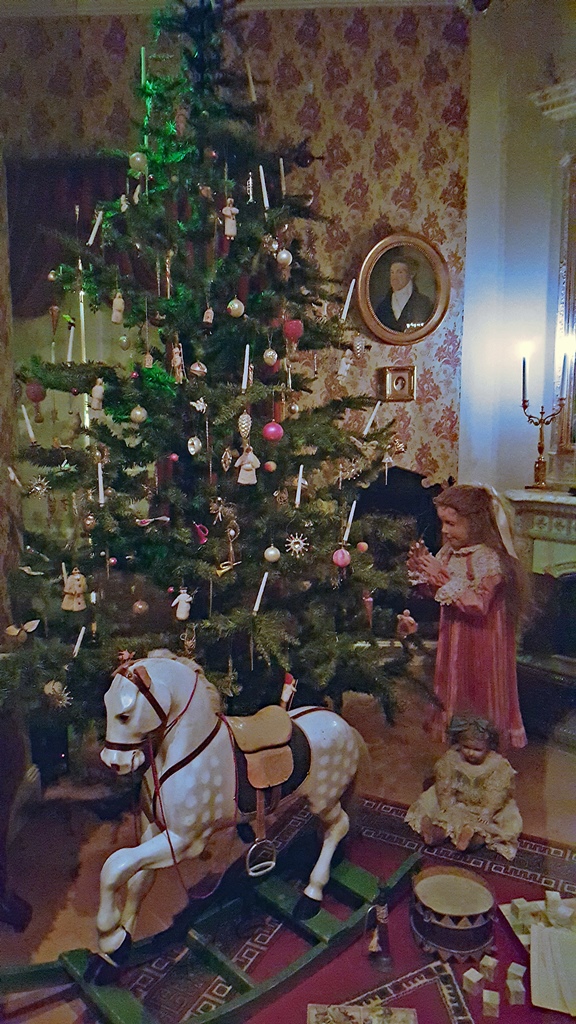Nordic Museum
The Nordic Museum is a museum of Swedish cultural
history, located on Djurgården island, within easy walking distance of the Vasa Museum. As we’d
just visited the Vasa Museum, our walk to the Nordic Museum didn’t take long, though we took the
time to stop for some fine dining along the way.
Sausage Stand Near Museum
The Nordic Museum has a collection of 1.5 million items, dating from the 16th Century through
the present day. The museum was founded in 1873 (when it was called the Scandinavian Ethnographic
Collection; it received its present name in 1880) by a man named Artur Hazelius, who was
interested in the preservation of Swedish folk culture, which he perceived to be under threat by
19th Century modernization and industrialization. Hazelius bought or received donations of many
culturally historic items, like furniture, clothing and toys, from all over Sweden. Initially he
focused on items from peasant culture, but the collection grew to include items from middle class
and urban lifestyles as well. Hazelius sought government funding for his efforts and was denied
at first, but by 1891 the Riksdag (Swedish Parliament) had relented, and began to supply some
working capital. The present museum building was built between 1888 and 1907, at first intended
for the Stockholm Exposition of 1897. By the time of the Exposition, the building was
unfortunately only half completed, but by 1907, the Nordic Museum was more than ready to occupy
its vast exhibition space.
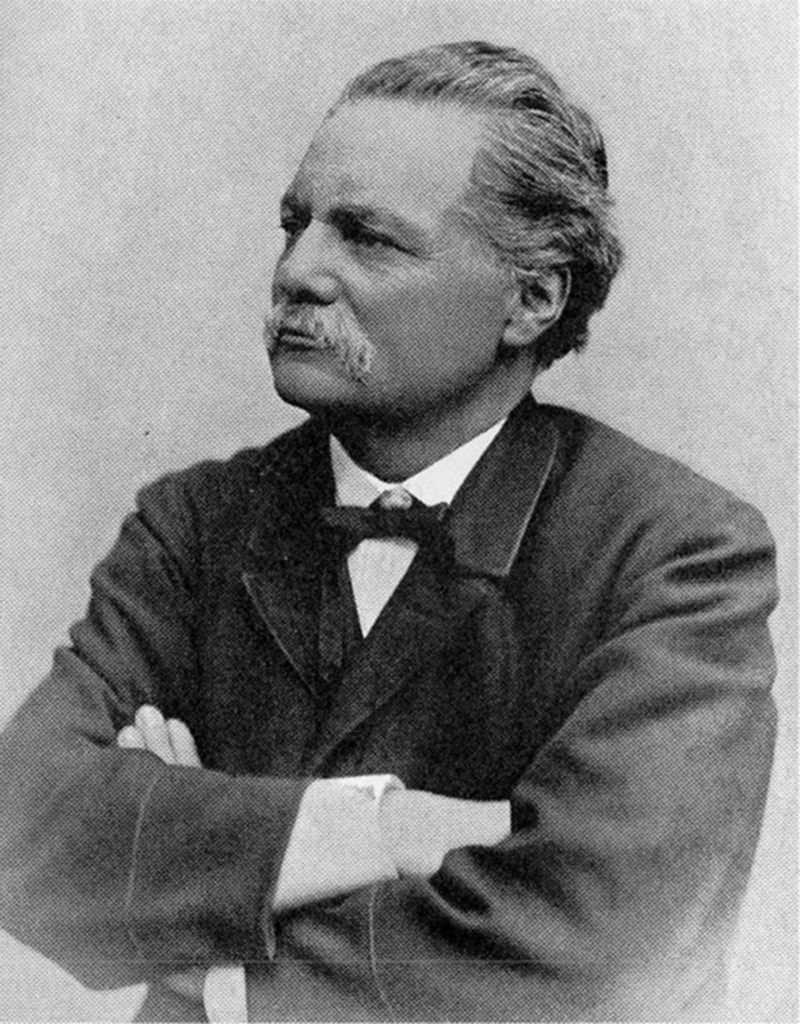
Artur Hazelius
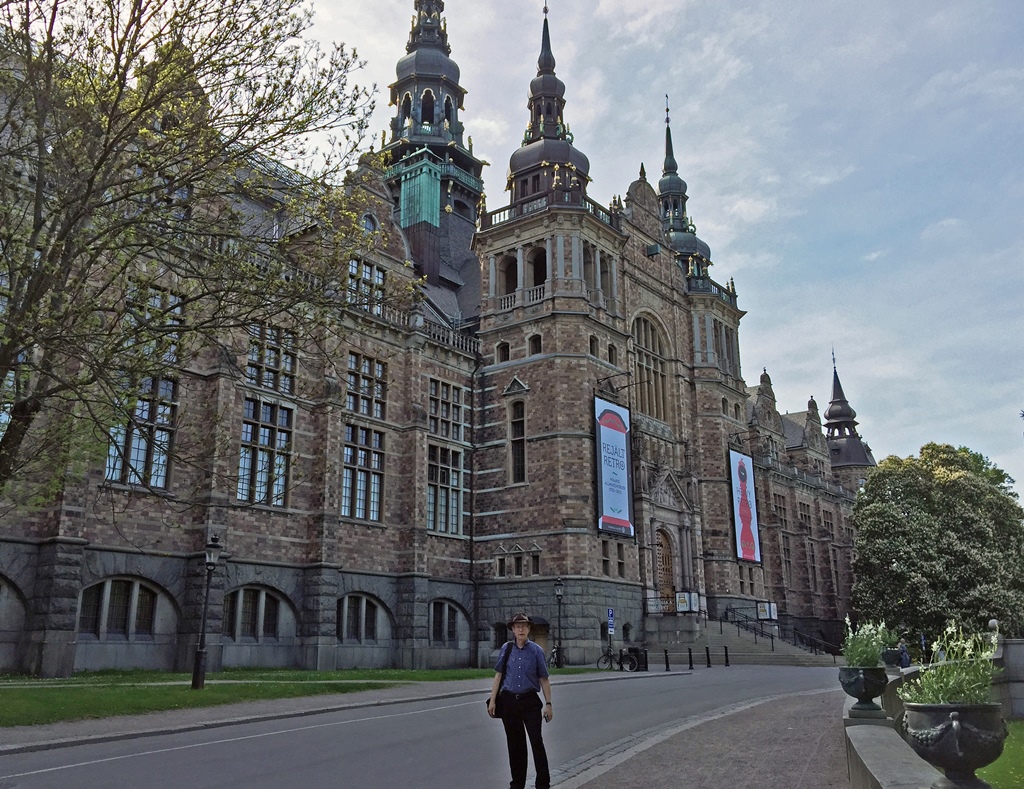
Bob and Museum Building
On entering the museum, one is confronted by a gigantic statue of Gustav I Vasa, the first
king of an independent Sweden. The statue was carved in oak by Carl Milles and his wife Olga.
Some of the wood in the statue’s forehead is said to have come from a tree planted by Gustav
Vasa himself. Gustav Vasa ruled in the 16th Century, apparently with an iron hand. The
inscription on the statue, WARER SVENSKE, translates roughly as “Be ye Swedish!”
Statue of Gustav Vasa, Carl and Olga Milles (1905-07)
The interior of the museum is a long (413 foot) open space, three floors high and skylighted,
centered on the Vasa statue. Exhibit rooms are entered from the open space, not unlike a
shopping mall.
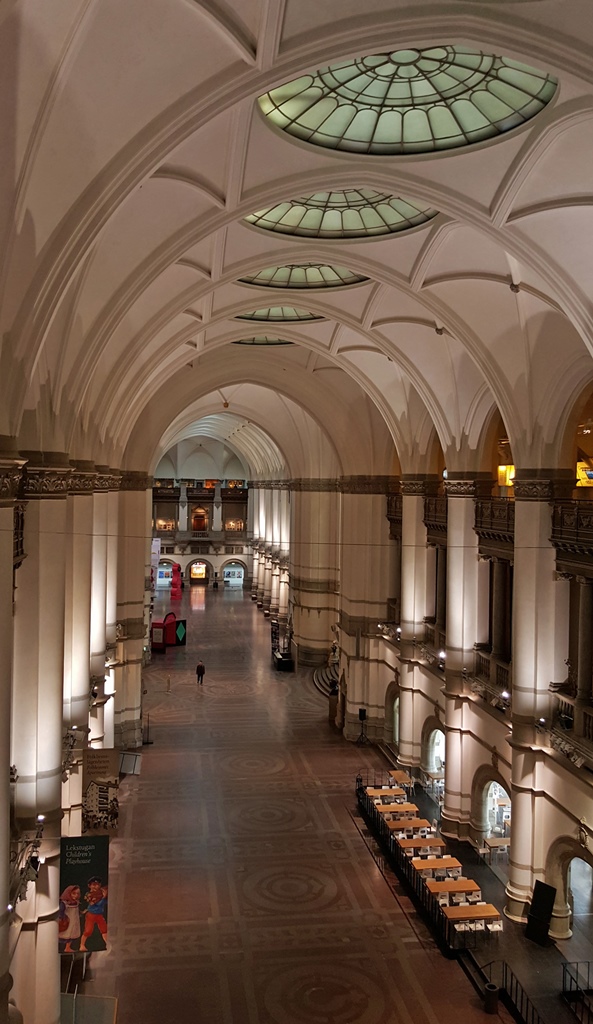
Main Hall
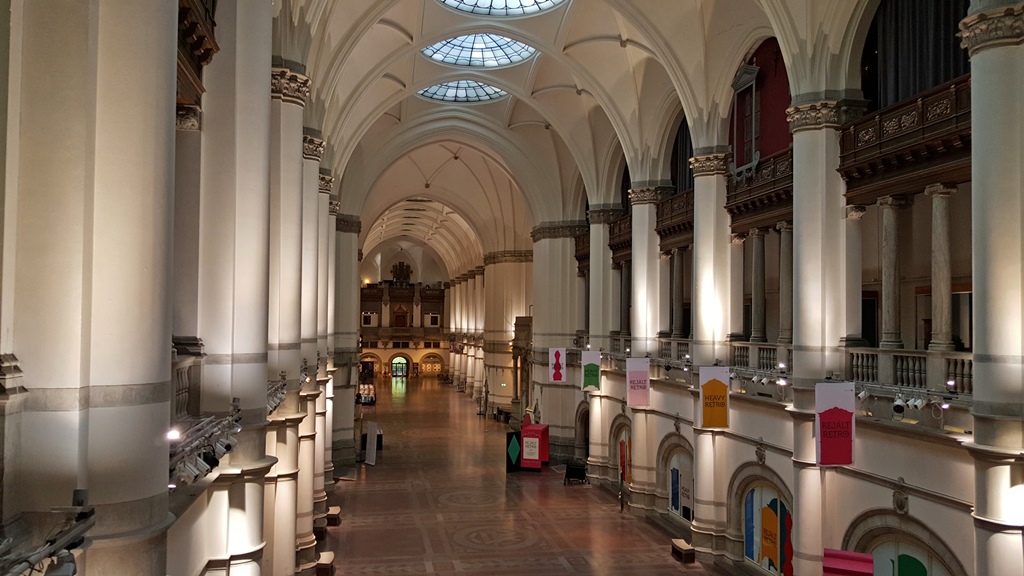
Main Hall
Most of the items in the museum are handmade, and can be viewed as being in a number of craftsy
categories. First, there are items that are just useful for day-to-day life (though with a
certain amount of Swedish style):
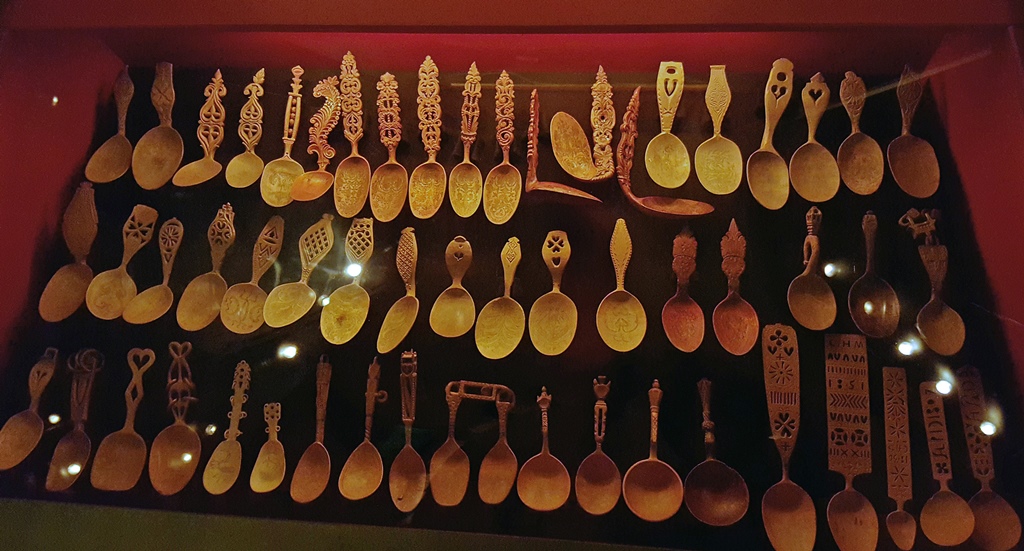
Many Spoons
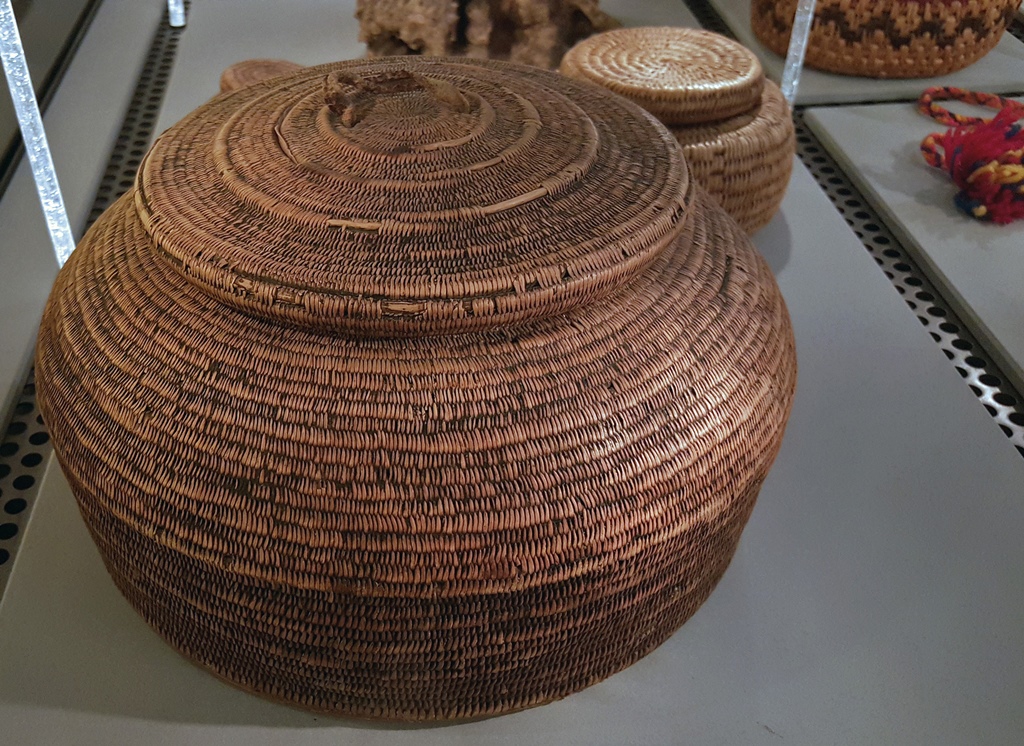
A Basket
Next, here are some decorative items which can be hung on walls:
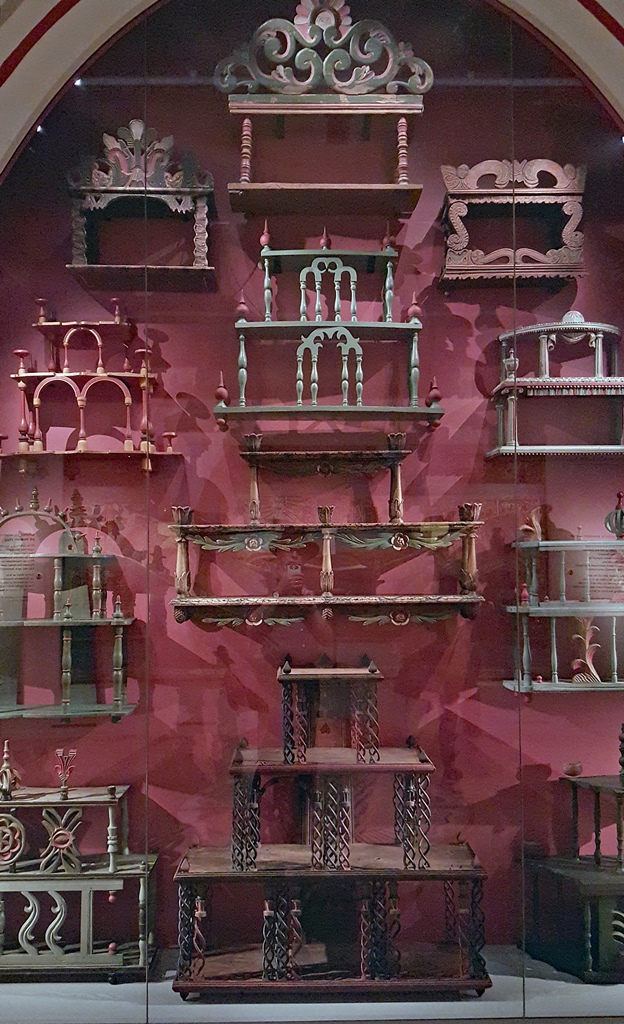
Hanging Shelves (Tavletts)
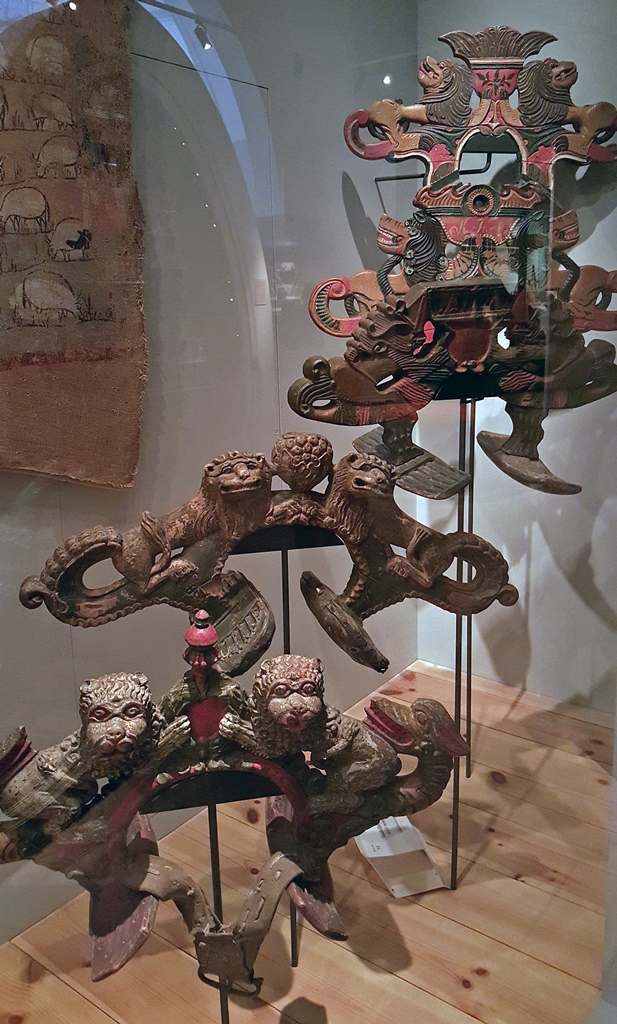
Wooden Coats of Arms and Monograms
There is a fair amount of decorative furniture in the museum also:
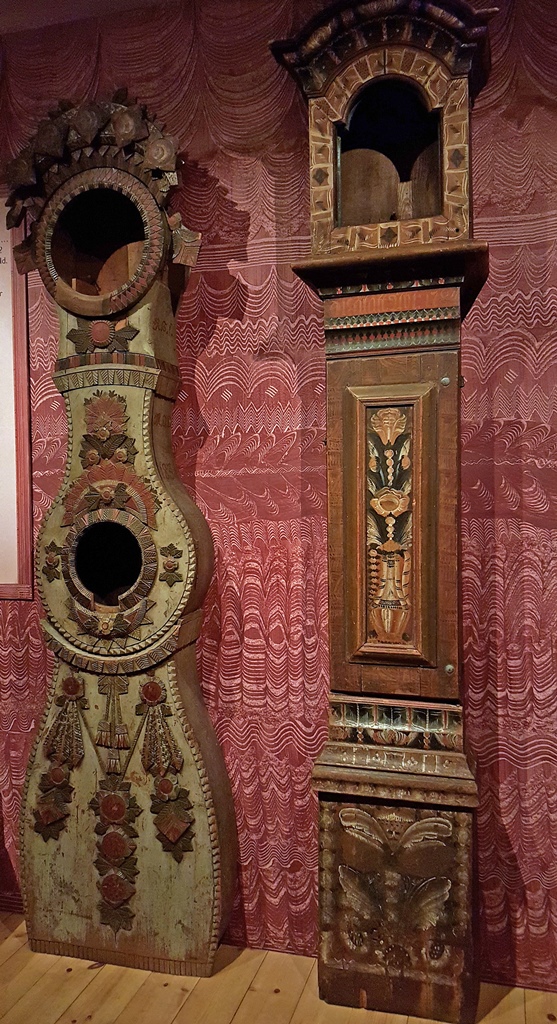
Clock Cases
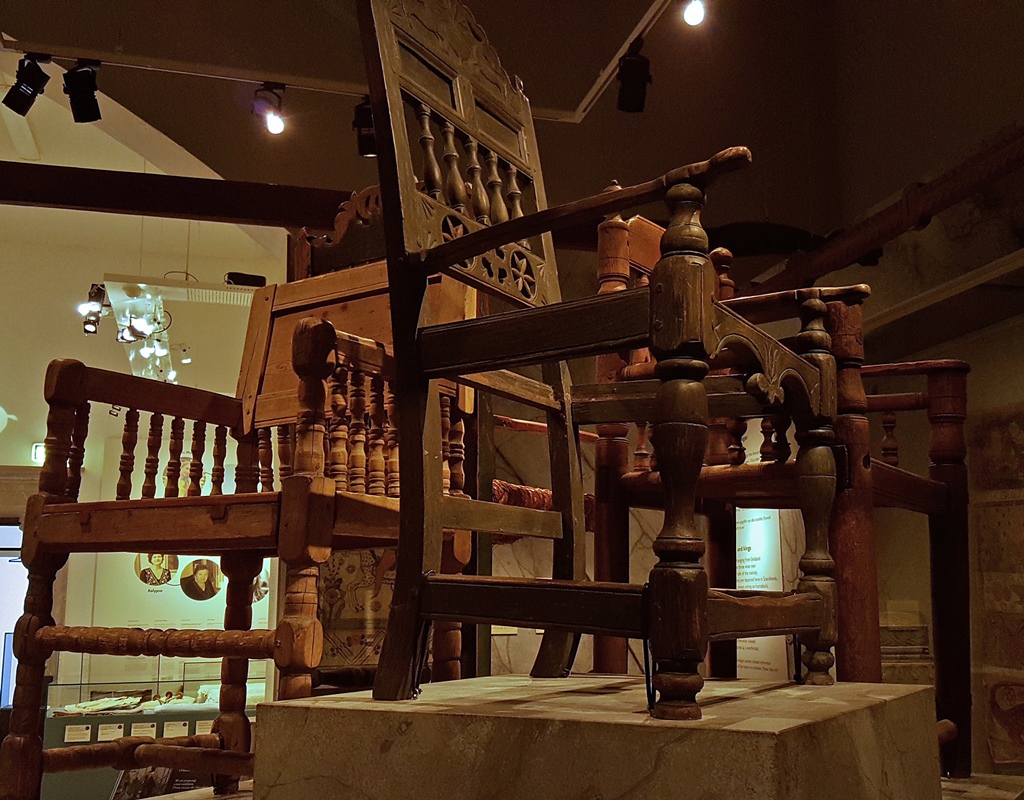
Chairs
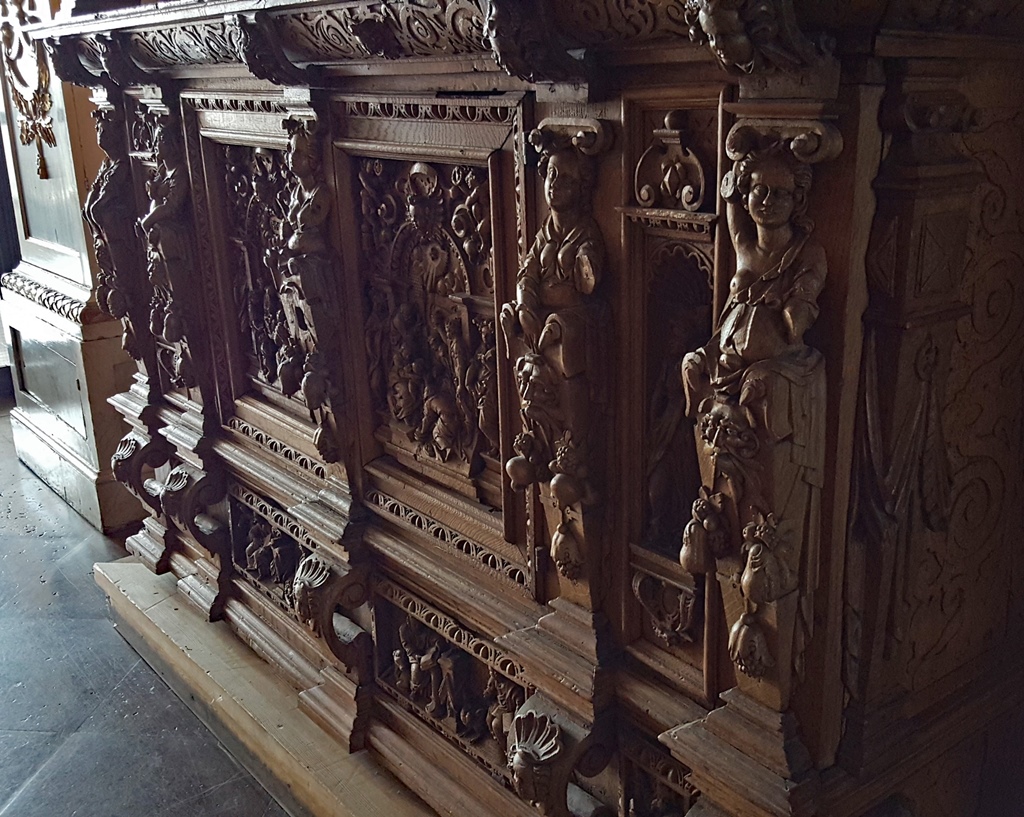
Wooden Cabinet
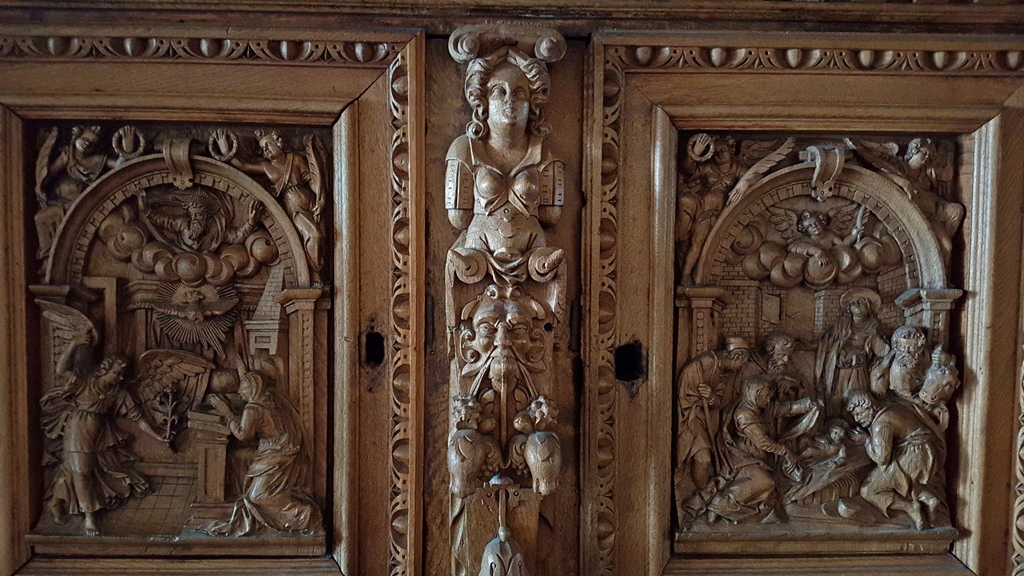
Detail, Wooden Cabinet
Embroidered Chair
Also on display are different types of day-to-day clothing, for different seasons and
different eras:
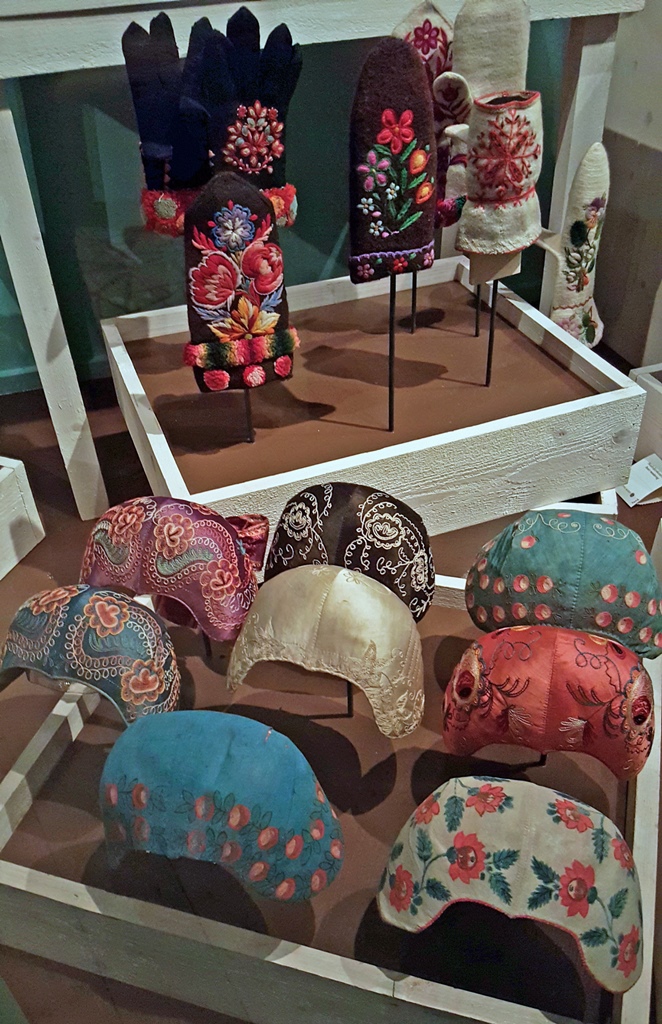
Embroidered Caps, Gloves and Mittens
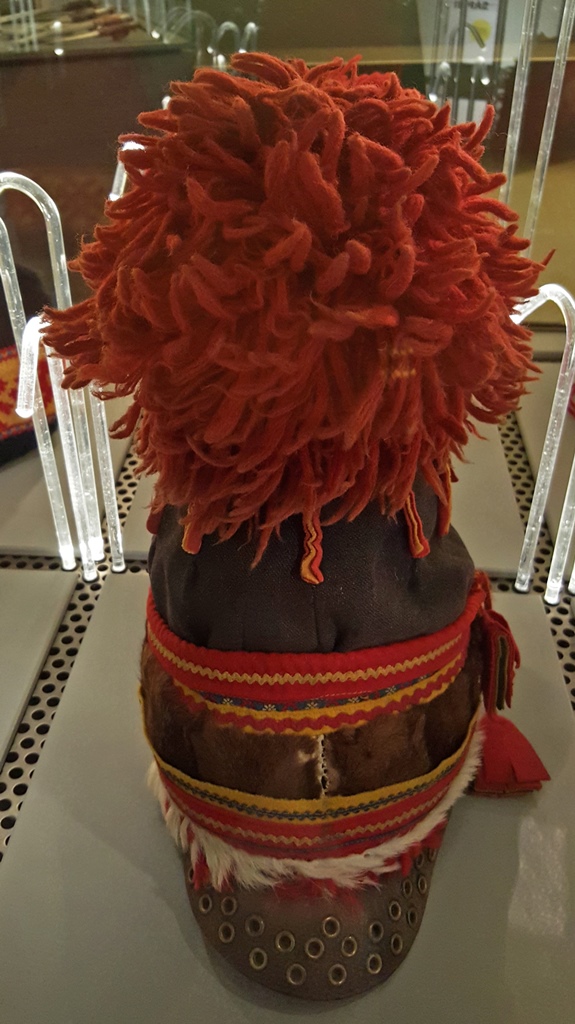
Winter Cap
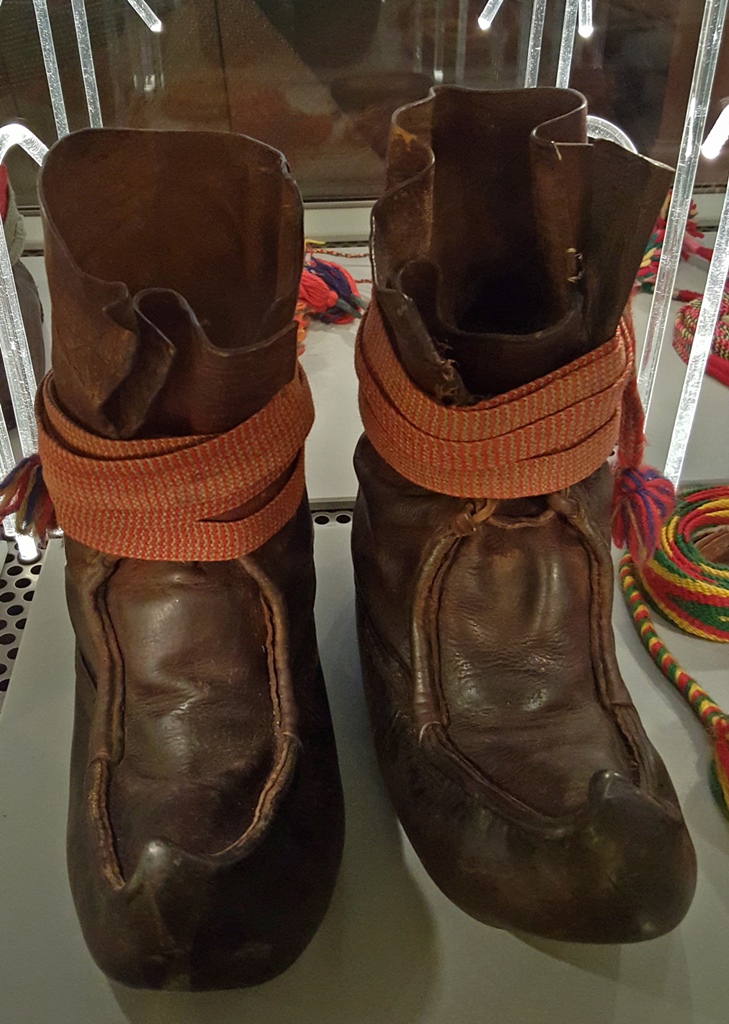
Leather Shoes with Ties
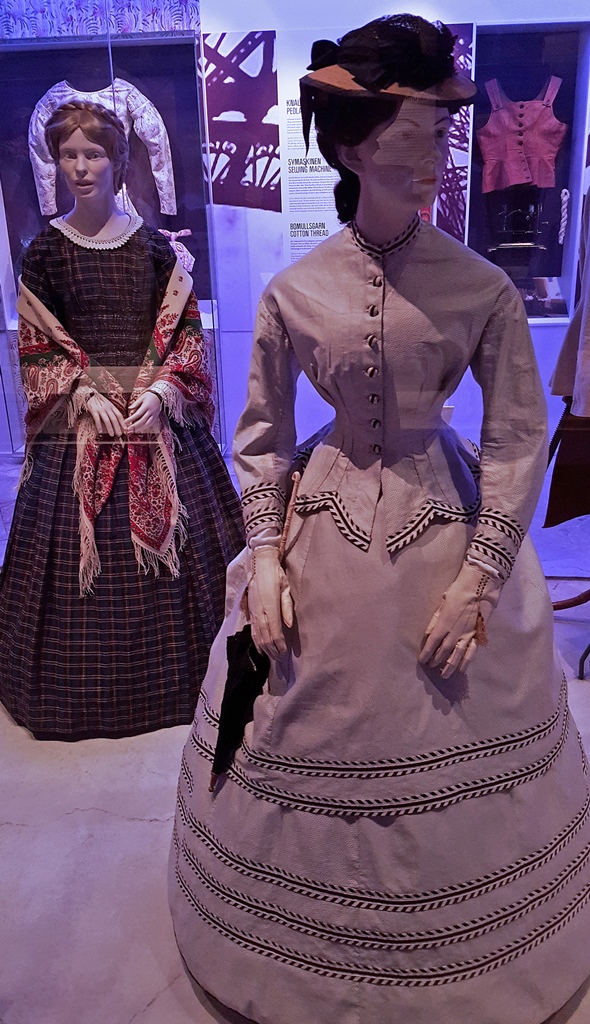
Everyday Dresses
Way back before Toys R Us, children still required things to play with, and these were made by
hand as well:
Rocking Chicken
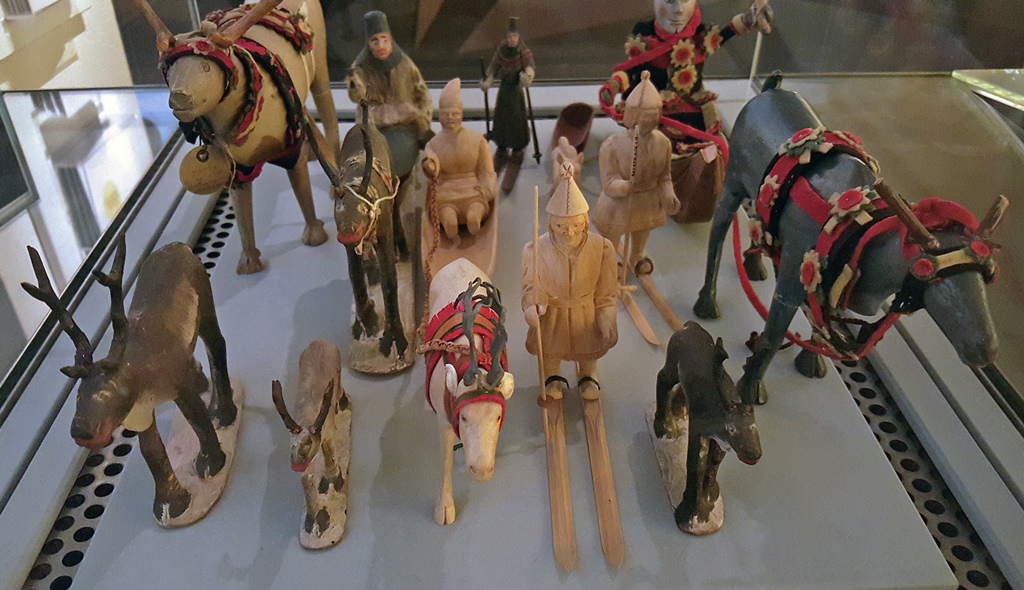
Figures of People and Animals
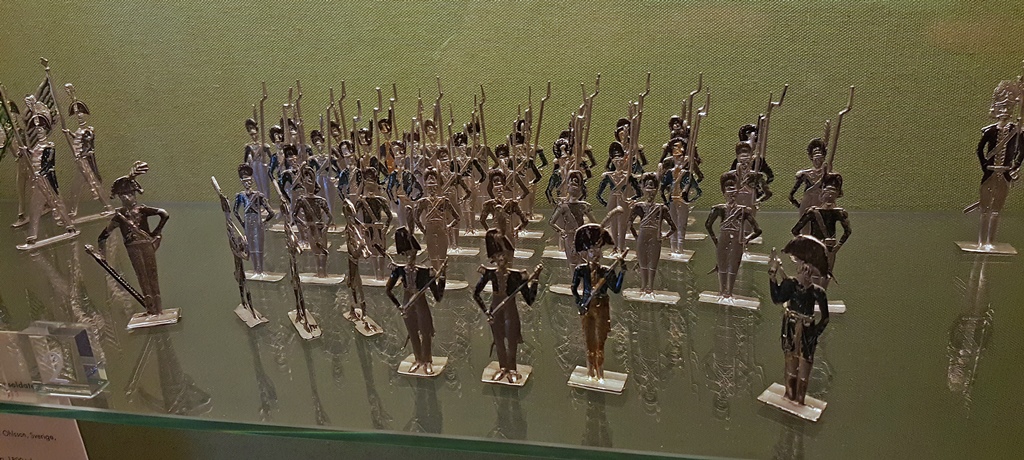
Metal Soldiers
For formal occasions, people wore special clothing, heavily accessorized. For weddings,
brides traditionally wore bridal crowns, of which there are several on display.
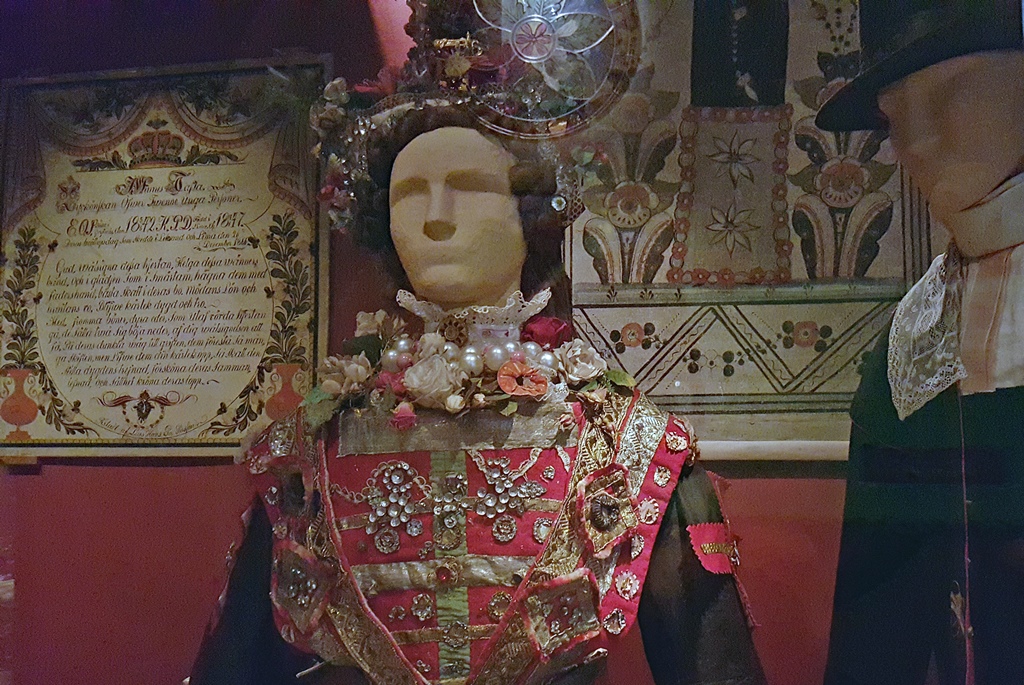
Figures with Traditional Bridal Clothing
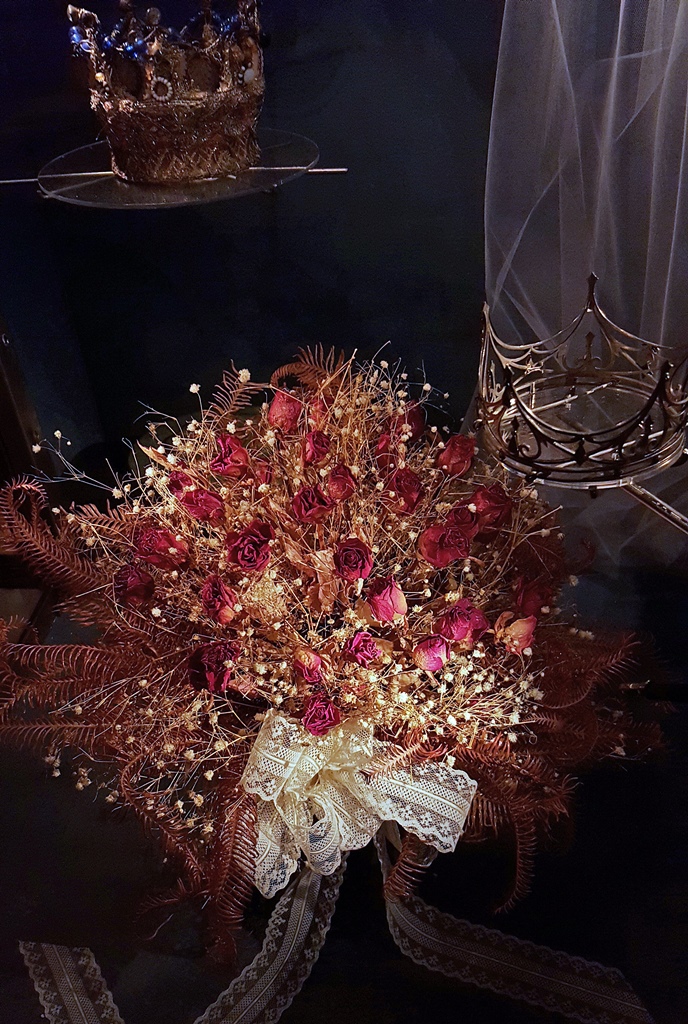
Dried Bouquet with Bridal Crowns
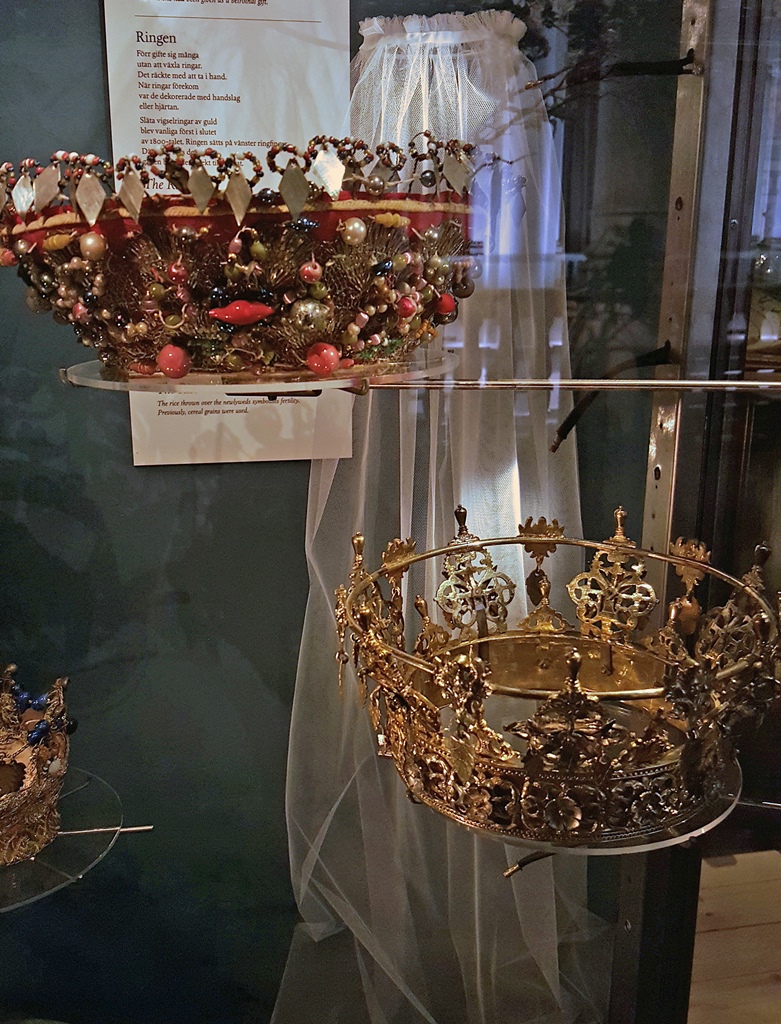
Bridal Crowns
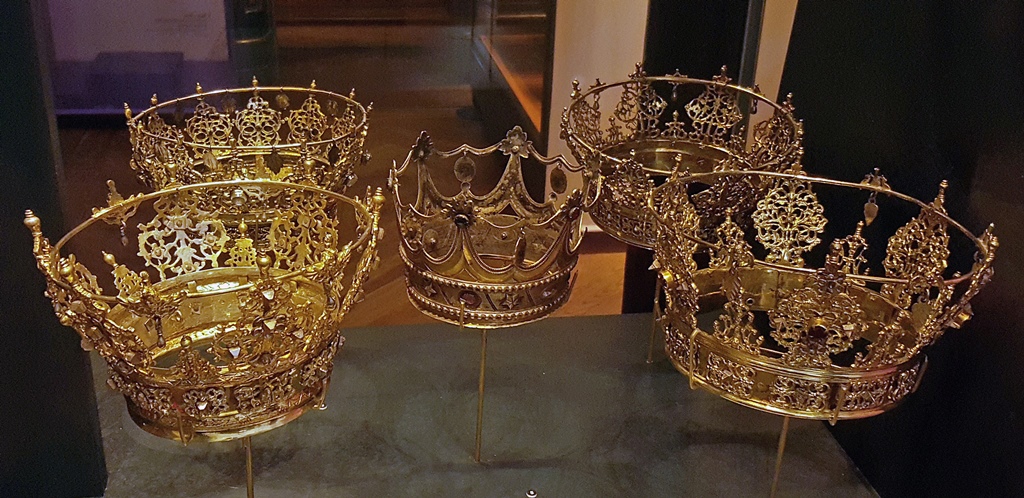
Bridal Crowns
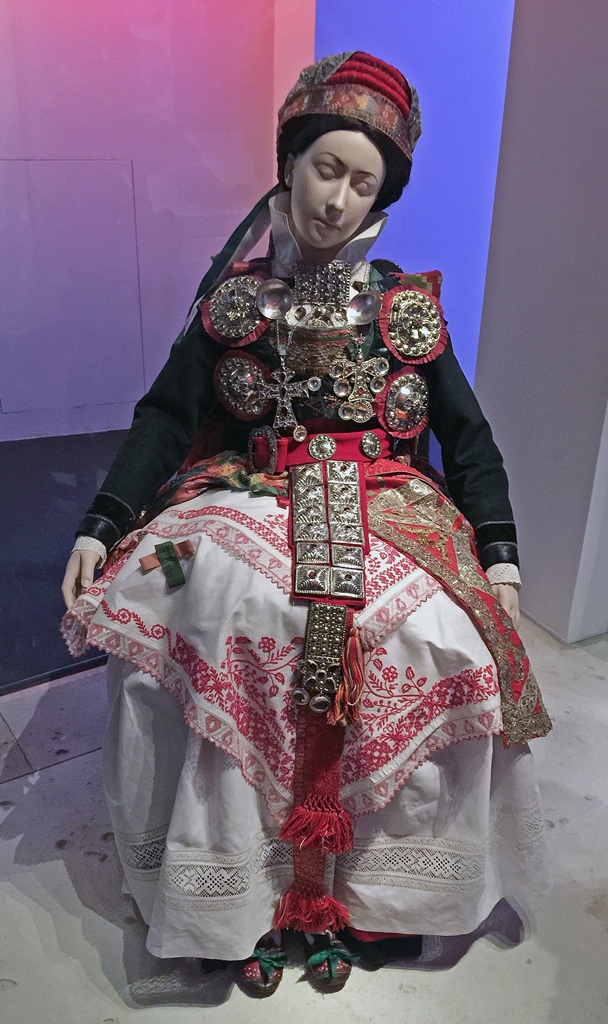
Sleeping Bride
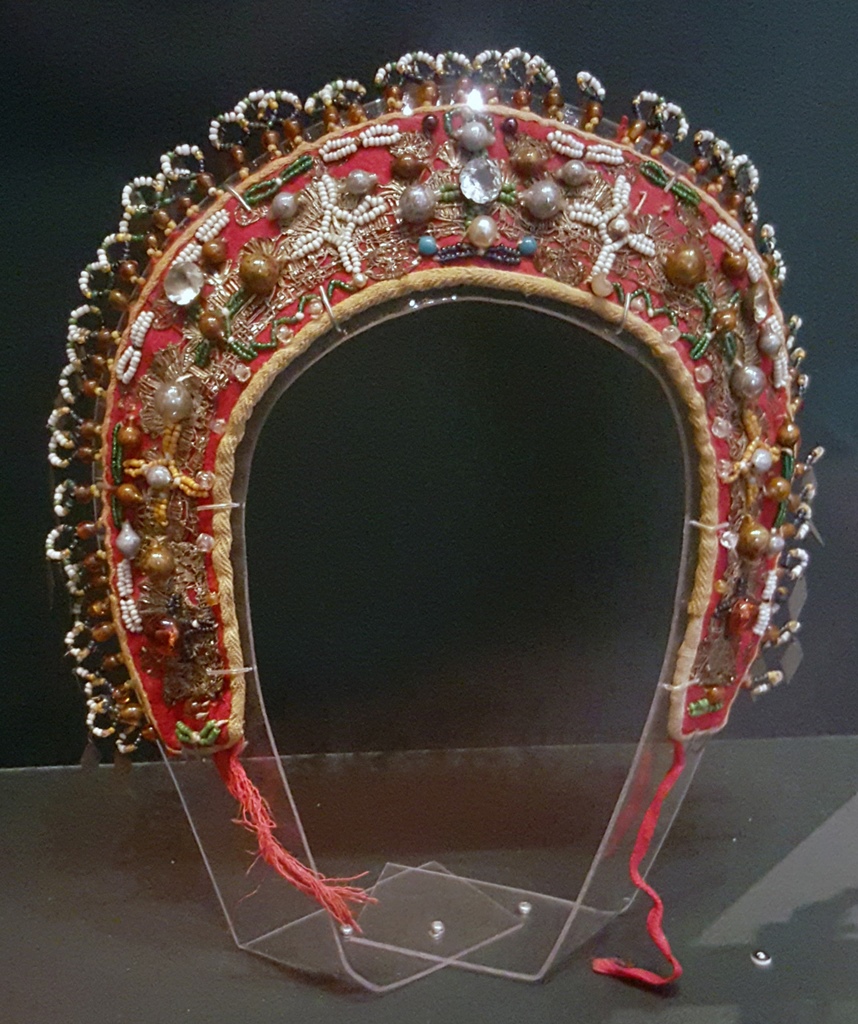
Pearl-Covered Headdress
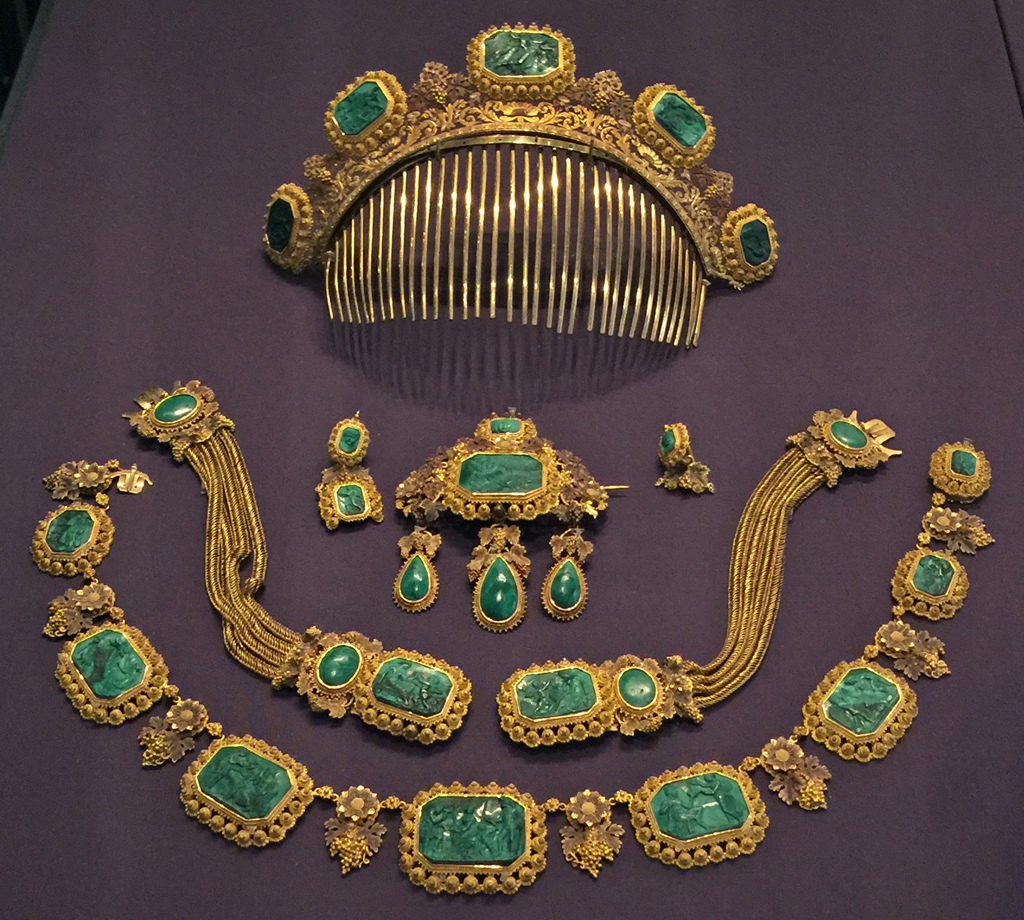
Gold/Malachite Set (ca. 1820-30)
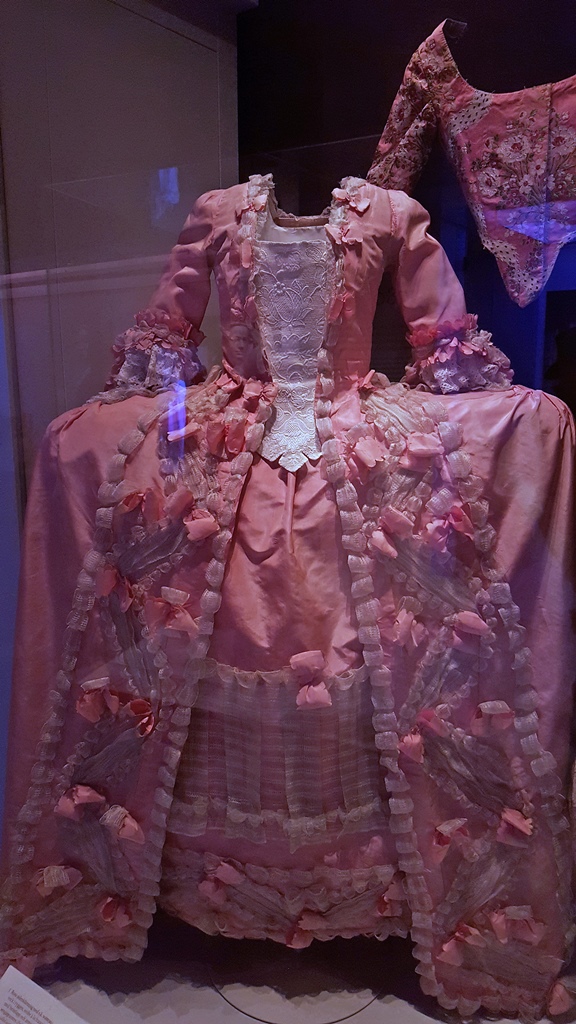
Big Pink Dress
Part of the museum is devoted to domestic scenes, such as table settings:
Christmas Scene
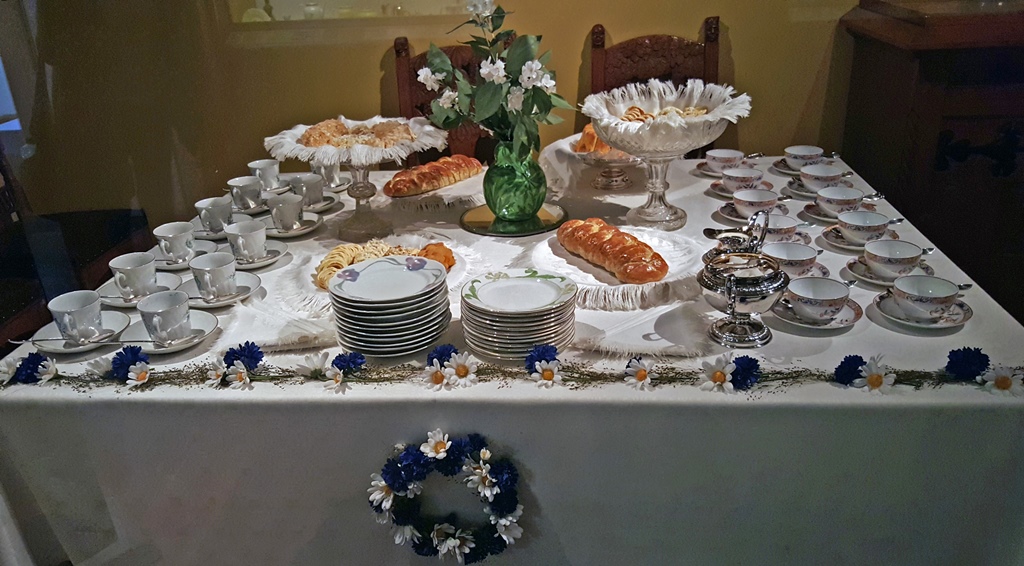
Table Setting
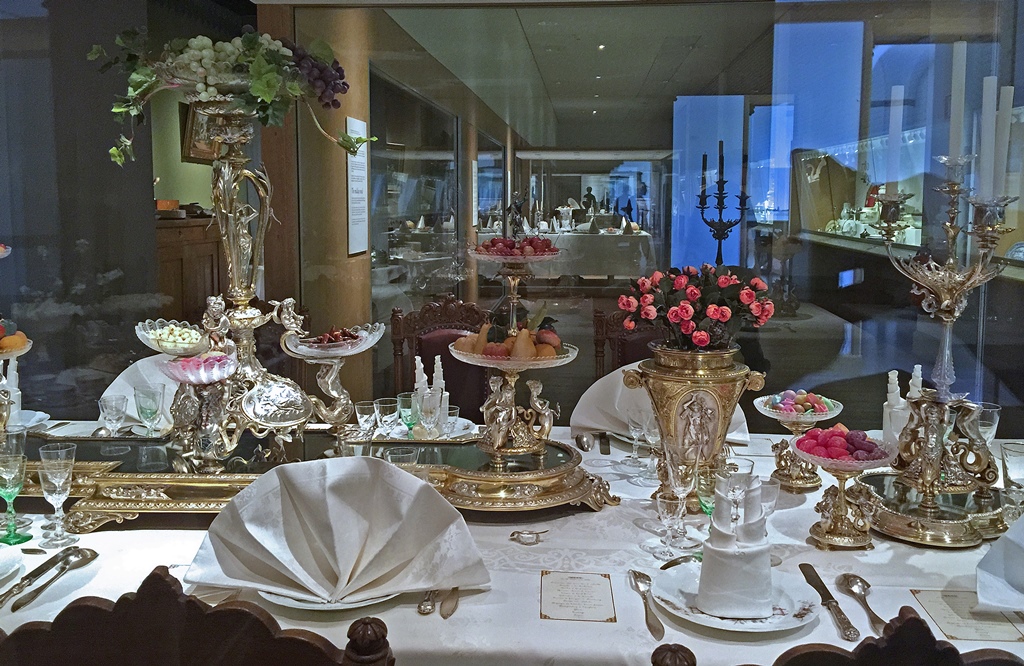
Table Setting
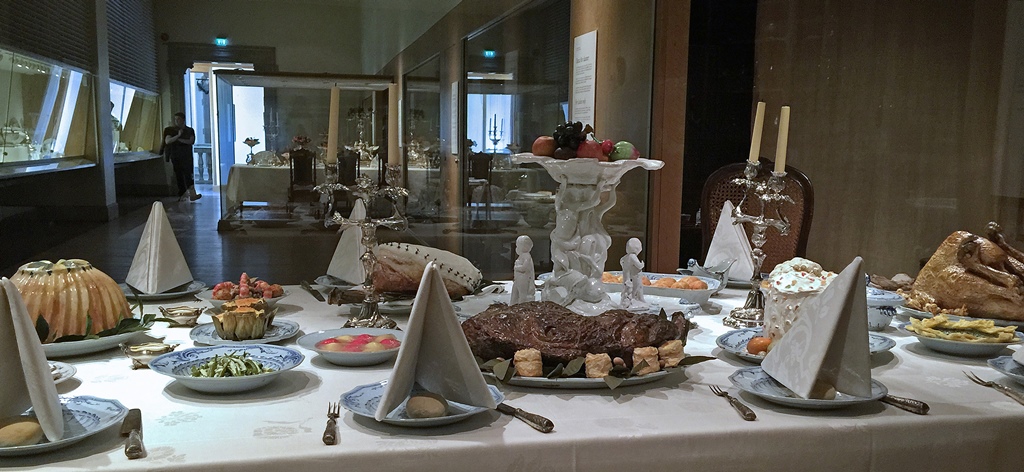
Table Setting
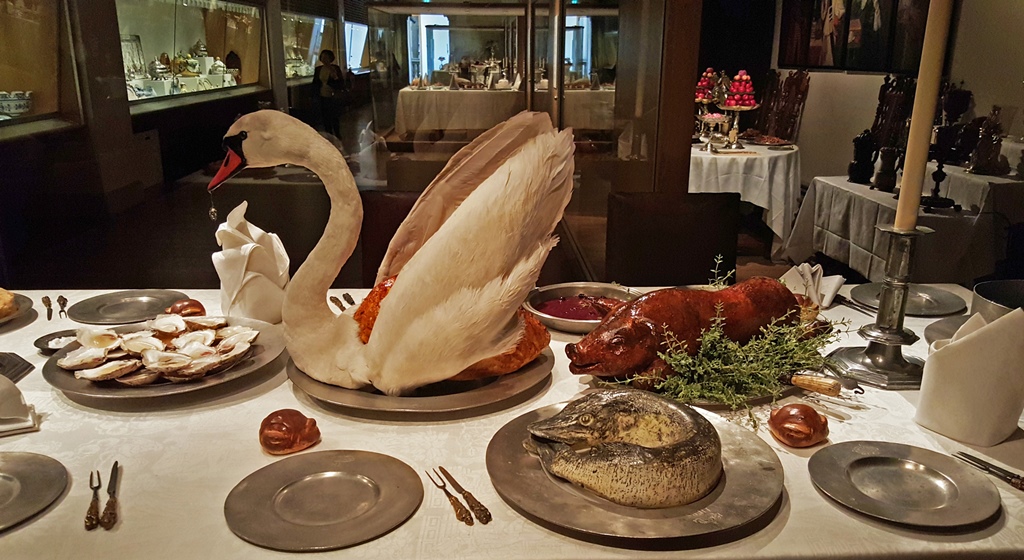
Table Setting
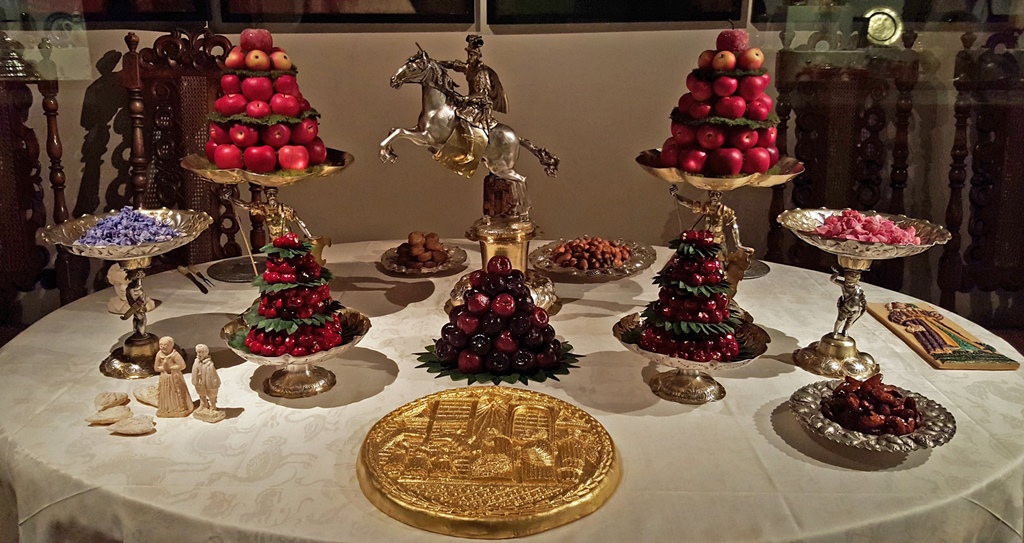
Table Setting
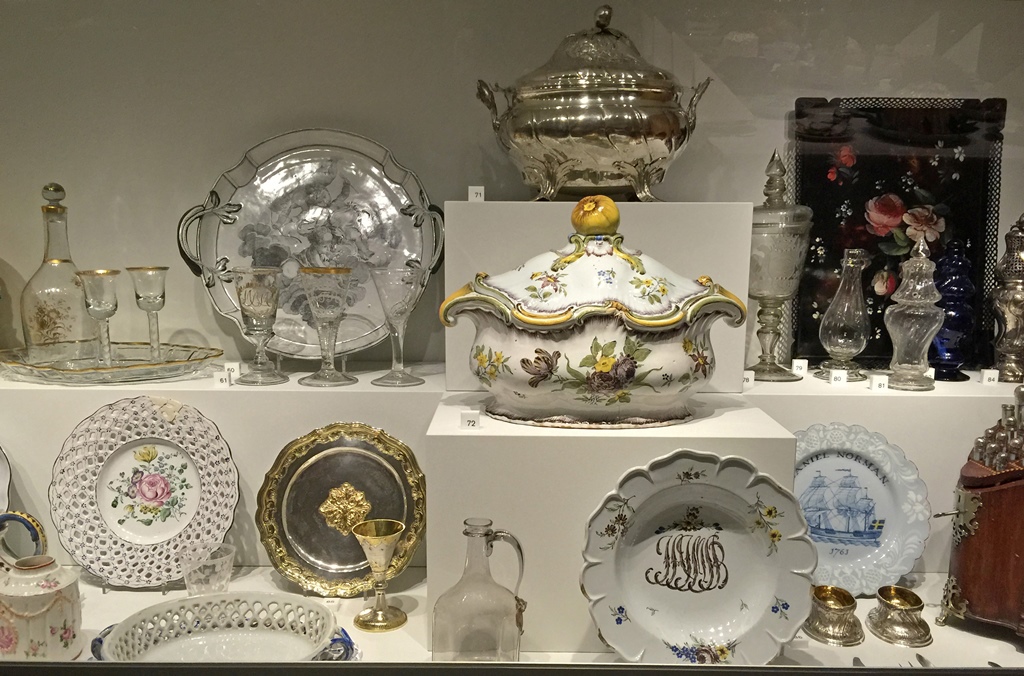
China and Crystal
Besides the building being attractive in itself, there are some nice views available from
parts of the building.
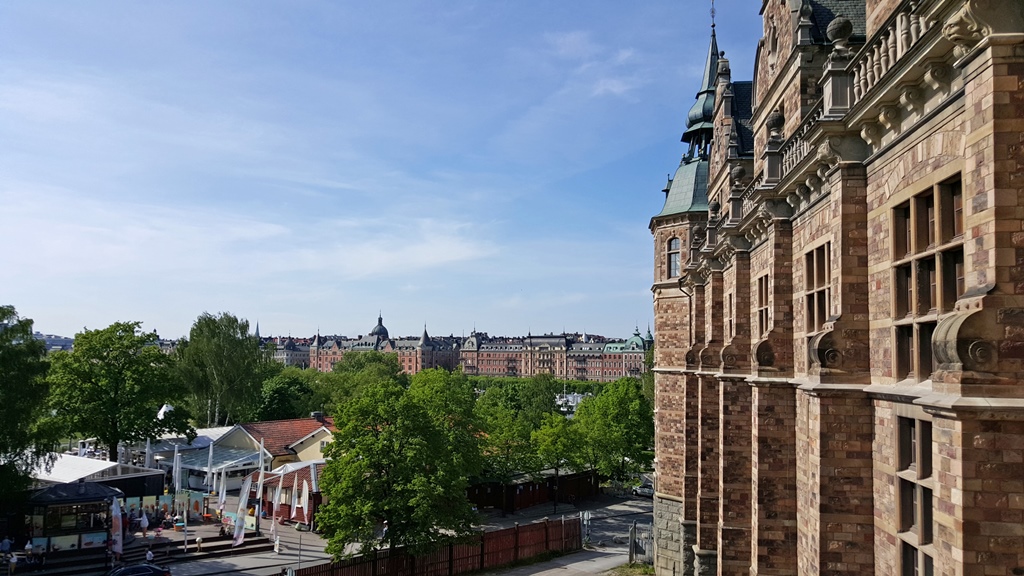
View from Museum
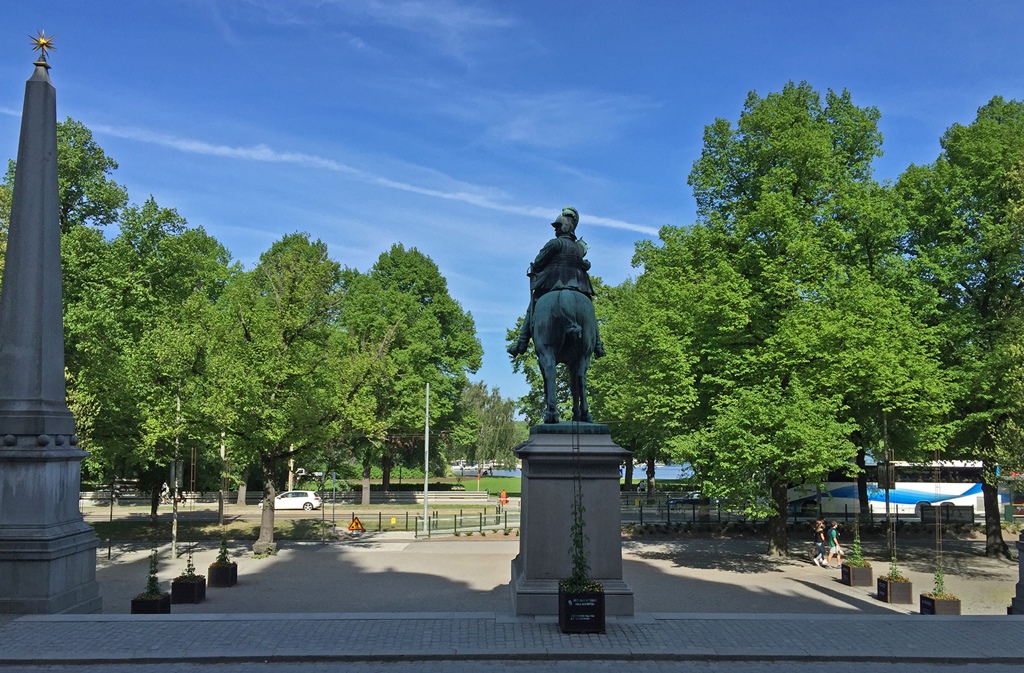
View from Museum Steps
Having had enough museums for one day, but still wanting to see more of Stockholm, we noticed
tour boats motoring around in the harbor, and thought this looked like a good idea. So we left
Djurgården island and walked off along the waterfront, searching for a home port of one of
these vessels.

